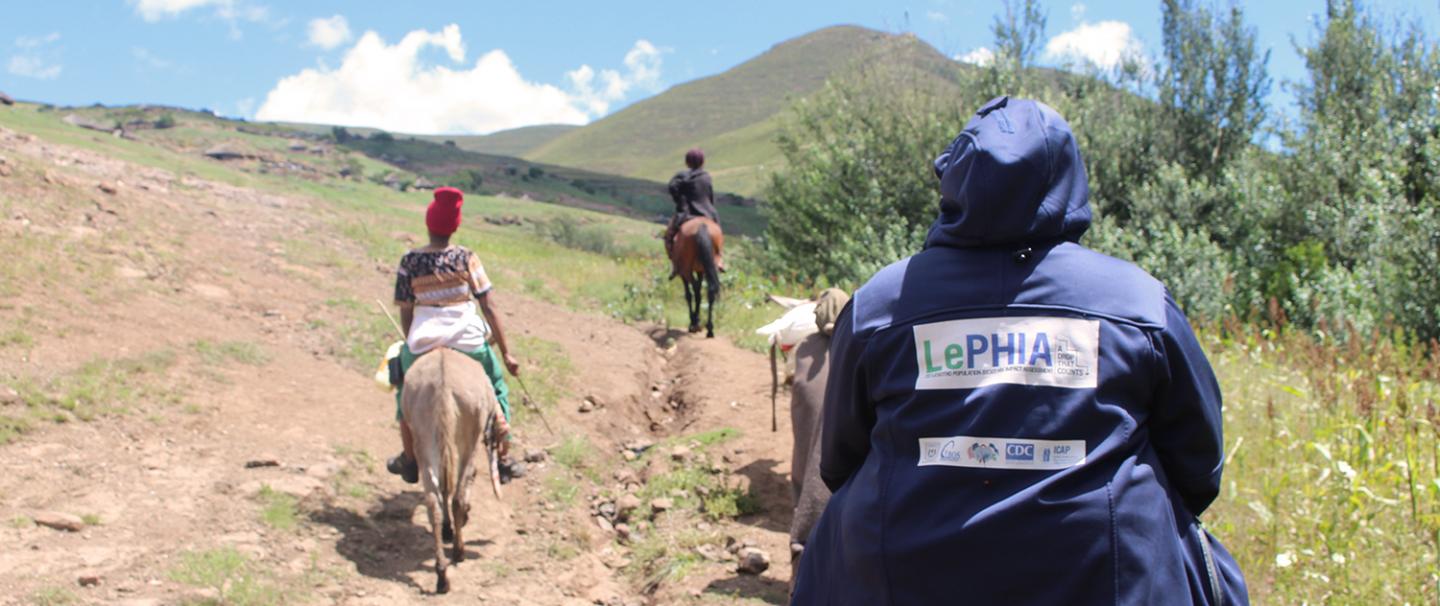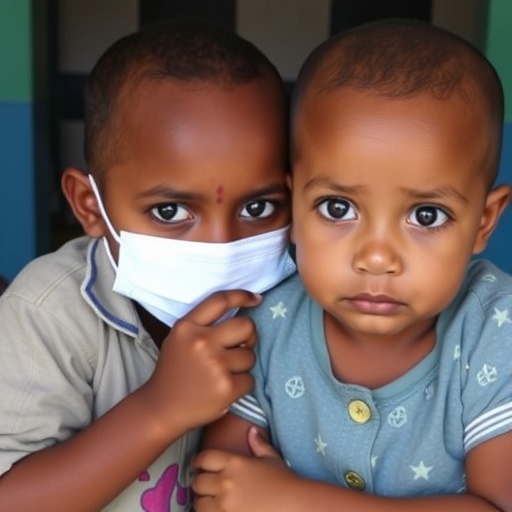
Credit: ICAP at Columbia University
Adolescent girls exposed to severe drought conditions in rural Lesotho had higher rates of HIV, according to a new study led by researchers at ICAP at Columbia University, a global health organization based at the Columbia Mailman School of Public Health, and from the Lesotho Ministry of Health and U.S. Centers for Disease Control and Prevention. Adolescent girls and young women in rural areas of drought were also more likely to engage in high-risk behaviors, including sex work, and were more likely to drop out of school. The findings are published in the journal PLOS Medicine.
First author Andrea J. Low, MD, PhD, assistant professor of Epidemiology at Columbia Mailman, and colleagues used data collected through the Lesotho Population-Based HIV Impact Assessment (LePHIA), a national HIV survey of 12,887 people conducted in 2016 and 2017.
In Lesotho, a small country in southern Africa, one-fourth of adults are living with HIV. In addition to this challenge, all of Lesotho was affected by a severe drought in 2014-16, which in some areas was the most severe since 1981. Researchers paired satellite-derived data on accumulated rainfall with geospatial data from the survey to determine if there were any associations between drought and HIV related outcomes. Of those interviewed in the survey, 94 percent lived in areas that experienced drought, and according to prior research, approximately one-quarter of the population required emergency food assistance.
The researchers identified an increase in a constellation of risk behaviors associated with HIV infection during the drought period, including transactional and commercial sex, suggesting that some women may have relied on sexual activity to survive. They also observed an increase in early sexual debut and reduced educational attainment in girls in rural areas consistent with the girls being removed from school for transactional partnerships or marriage so that families could benefit from the bride price. According to the researchers, lower school enrollment could have far-reaching consequences, in terms of both HIV acquisition and entrenchment of poverty. In addition, external migration, commonly seen during drought periods, was associated with a higher prevalence of HIV in young people; this is particularly concerning as migrants may have less access to HIV care.
“The impact of climate change on human health is becoming increasingly evident,” the authors write. “Climate extremes are often associated with changes in behavior as people struggle to survive in the face of loss of agricultural production. As people, particularly women, address their food insecurity, they may be less likely to take steps to protect themselves from HIV infection. … There is also concern that food insecurity could lead to decreased access to antiretrovirals (ARVs) because of economic constraints or decreased adherence or absorption of ARVs.”
The researchers conclude with a call for a coordinated policy and strategy to attenuate the effects of drought on HIV infection in southern Africa. “Potential interventions should minimize these shocks by targeting the myriad factors contributing to vulnerability and could include cash transfers to encourage families to keep children in school and avoid early marriage, provided to rural families in times of food shortage, and expanded programs for adolescent girls and young women, sex workers, and migrants, including pre-exposure prophylaxis (PrEP). In light of the anticipated acceleration of such climatic extremes, more research is urgently needed on improving resilience of crops to drought to mitigate the severity of impact on household incomes and public health.”
“This is the first paper to link climate shock to an HIV epidemic since antiretroviral drugs became more widely available in sub-Saharan Africa,” said Jessica Justman, MD, senior technical director of ICAP at Columbia University and principal investigator of the PHIA Project. “We should view this as another kind of warning that climate change will affect us in unexpected and unwelcome ways.”
On January 16, the Government of Lesotho, the U.S. President’s Emergency Plan for AIDS Relief (PEPFAR), the U.S. Centers for Disease Control and Prevention (CDC), and ICAP announced the final results of the Lesotho Population-based HIV Impact Assessment (LePHIA) survey. The new data shows remarkable strides the government is making toward controlling its HIV epidemic. The number of people tested and aware of their HIV status was higher than initially reported in 2017 (81 percent today vs. 77 percent in 2017) and the annual HIV incidence is slightly lower (1.1 percent today vs. 1.5 percent in 2017). According to Andrea Low, the findings suggest that Lesotho is making good progress against HIV, but that future drought might lead to setbacks in epidemic control.
###
The study was supported by the U.S. President’s Emergency Plan for AIDS Relief (PEPFAR) through the Centers for Disease Control and Prevention (CDC) (#U2GGH001226). Additional authors include Koen Frederix, Stephen McCracken, Salome Manyau, Elizabeth Gummerson, Elizabeth Radin, Stefania Davia, Herbert Longwe, Nahima Ahmed, Bharat Parekh, Sally Findley, and Amee Schwitters. The authors declare no competing interests.
Climate and Health Research at the Columbia Mailman School
Scientists at the Columbia Mailman School of Public Health conduct research to understand, anticipate, and respond to health risks associated with climate change, such as the link between worsening urban heatwaves and mortality risk, air pollution and children’s health, and forced migration. They have contributed tools for responding to climate threats, including the first multiplex test for tick-borne diseases and an early warning system for heatwaves. Columbia Mailman is home to the Climate and Health Program, the first academic program of its kind in a public health school, and the Global Consortium on Climate and Health Education (GCCHE), a global network of health profession schools and programs committed to educating their students on the health impacts of climate change and other planetary health challenges.
Media Contact
Tim Paul
[email protected]
212-305-2676
Related Journal Article
http://dx.




